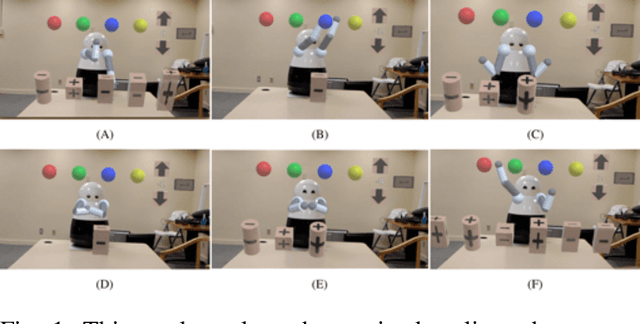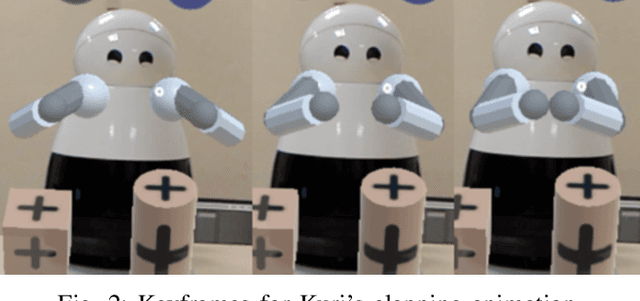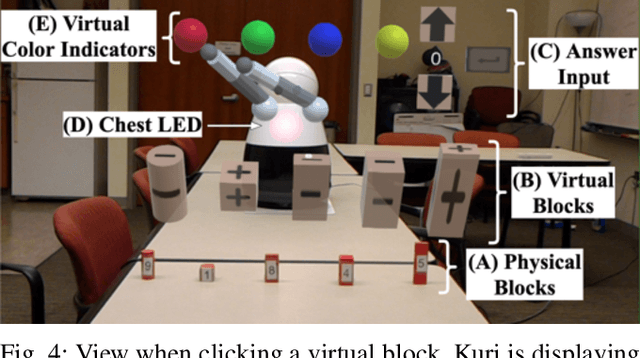Using Socially Expressive Mixed Reality Arms for Enhancing Low-Expressivity Robots
Paper and Code
Nov 30, 2019



Expressivity--the use of multiple modalities to convey internal state and intent of a robot--is critical for interaction. Yet, due to cost, safety, and other constraints, many robots lack high degrees of physical expressivity. This paper explores using mixed reality to enhance a robot with limited expressivity by adding virtual arms that extend the robot's expressiveness. The arms, capable of a range of non-physically-constrained gestures, were evaluated in a between-subject study ($n=34$) where participants engaged in a mixed reality mathematics task with a socially assistive robot. The study results indicate that the virtual arms added a higher degree of perceived emotion, helpfulness, and physical presence to the robot. Users who reported a higher perceived physical presence also found the robot to have a higher degree of social presence, ease of use, usefulness, and had a positive attitude toward using the robot with mixed reality. The results also demonstrate the users' ability to distinguish the virtual gestures' valence and intent.
 Add to Chrome
Add to Chrome Add to Firefox
Add to Firefox Add to Edge
Add to Edge